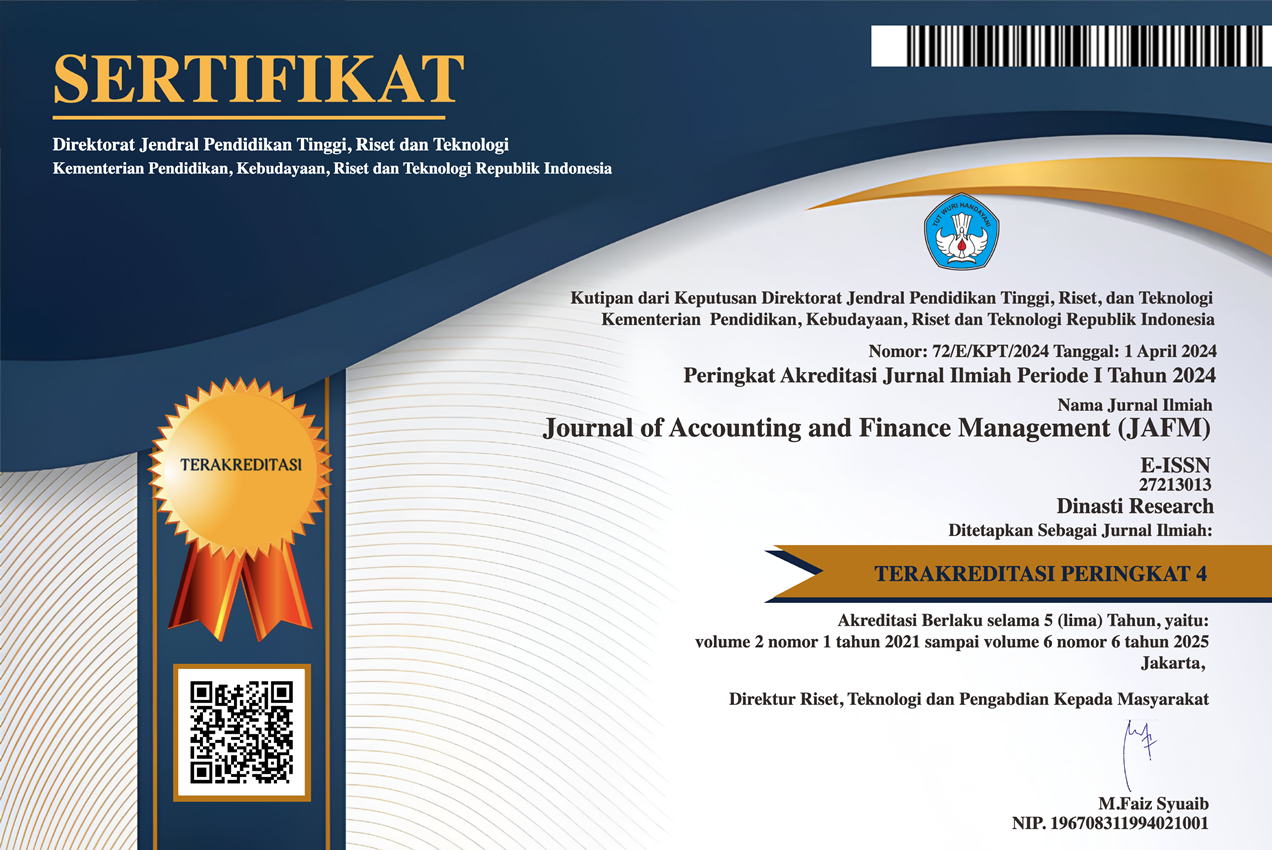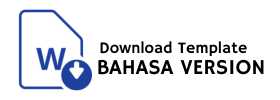Leverage, Company Size, and Audit Quality Effect on Tax Avoidance in Manufacturing Companies Listed on the Indonesia Stock Exchange and Malaysia Exchange for the 2015-2019 Period
DOI:
https://doi.org/10.38035/jafm.v3i6.167Keywords:
Leverage, Company Size, Audit Quality, Tax AvoidanceAbstract
State revenue from the manufacturing sector had the largest share during the period 2015 - 2019 in Indonesia and Malaysia but has not been able to increase the tax ratio due to indications of tax avoidance practices. This research looks at the elements that affect tax avoidance, including leverage, company size, and audit quality. Using certain criteria, 70 samples from the stock markets of both countries were selected, representing the population. Data research has revealed tax avoidance significantly affected by leverage, and size company, but not by the quality of audit. Meanwhile, tax avoidance is significantly influenced by leverage results, company size, and audit quality simultaneously. This study proposes a model for calculating the avoidance potential with the ETR accounting formula.
References
APBN Kita Kementerian Keuangan RI. (2019). APBN KITA Edisi Januari 2019. APBN Kita, 1–108. https://www.kemenkeu.go.id/apbnkita
Boussaidi, A., & Hamed, M. S. (2015). The Impact of Governance Mechanisms on Tax Aggressiveness: Empirical Evidence from Tunisian Context. Journal of Asian Business Strategy, 5(1), 1–12.
Daito, A. (2007). Metodologi Penelitian Penyusunan Skripsi. Tesis/Disertasi., Jakarta., Universitas Budi Luhur
Dewi, G. A. P., & Sari, M. M. R. (2015). Pengaruh Insentif Eksekutif , Corporate Risk Dan Corporate Governance Pada Tax Avoidance. Jurnal Akuntansi, Universitas Udayana, 50–67.
Edosa Joshua, A. O. C. (2019). Corporate Tax Avoidance: Review Of Measures And Prospects. International Journal of Accounting & Finance (IJAF), 8(2), 21–42.
Erieska, L. A. (2019). Pengaruh Size KAP dan Fee Audit terhadap Kualitas Audit dengan Rotasi Audit sebagai Variabel Intervening (Studi Empiris pada Perusahaan Manufaktur yang Tercatat di Bursa Efek Indonesia 2014-2017). Jurnal Mahasiswa Magister Akuntansi, 4(1), 1–15.
Frank, M. Z., & Goyal, V. K. (2003). Testing the pecking order theory of capital structure. In Journal of Financial Economics (Vol. 67, Issue 2).
Gebhart, M. (2017). Anzeige von Measuring Corporate Tax Avoidance – An Analysis of Different Measures _ Junior Management Science.pdf. 2(2), 43–60.
Hanlon, M., & Heitzman, S. (2010). A review of tax research. Journal of Accounting and Economics, 50(2–3), 127–178.
Hapsari Ardianti, P. N. (2019). Profitabilitas, Leverage, dan Komite Audit Pada Tax Avoidance. E-Jurnal Akuntansi, 26(2019), 2020.
Hariani, S., & Waluyo. (2019). Effect of Profitability, Leverage and CEO Narcissism on Tax Avoidance. International Journal Scholars Middle East Publishers, 6(8), 414–421.
Hartono Jogianto. (2015). Teori Perfotofolio dan Analisis Investasi. Yogyakarta?: BPFE.
Kasmir. (2016). Analisis Laporan Keuangan. Jakarta?: Raja Grafindo Persada.
Kemenperin. (2018).Kemenperin: Industri Manufaktur Penyumbang Pajak Terbesar. In Kemenperin_RI. https://kemenperin.go.id/artikel/18640/Industri-Manufaktur-Penyumbang-Pajak-Terbesar
Kim, J. H., & Im, C. C. (2017). The study on the effect and determinants of small-and medium-sized entities conducting tax avoidance. Journal of Applied Business Research, 33(2), 375–390.
Michael C.Jensen and William H.Meckling. (1976). Theory of The Firm?: Managerial Behavior Agency Costs and Ownership Structure.
Nugraheni, A. S., & Pratomo, D. (2018). Pengaruh Komite Audit, Kualitas Audit, Dan Ukuran Perusahaan Terhadap Tax Avoidance. 5(2), 4202–4208.
Putri, R. T., Ulum, I., & Prasetyo, A. (2018). Company Risk, Size, Fiscal Loss Compensation, and Tax Avoidance: Evidence from Indonesian Islamic Companies. Journal of Innovation in Business and Economics, 2(02), 87.
Ross L. Watts, & Jerold L. Zimmerman. (1990). Positive Accounting Theory: A Ten Year Perspective. The Accounting Review, 65(1), 131–156.
Stewart C. Myers. (1984). The Capital Structure Puzzle. The Journal of Finance, Vol. XXXIX(No.3).
Suandy, E. (2017). Hukum Pajak. Yogyakarta: Salemba Empat.
Surveys, O. E. (2018). OECD Economic Surveys. In OECD Economic Surveys (Issue October).
Ubaidillah, M. (2021). Tax Avoidance: Good Corporate Governance. Owner, 5(1), 152–163.
Vani Maili, A. (2020). Pengaruh Profitabilitas, Ukuran Perusahaan dan Capital Intensity terhadap Tax Avoidance. Jurnal Manajemen Pendidikan Dan IImu Sosial, 1(2), 506–515.
Winder, C. J. (2017). Estimating tax avoidance_ New findings, new questions – The International Centre for Tax and Development (ICTD). Widening the debate on Tax and Development.
Yahaya, K. A., & Yusuf, K. (2020). Impact of Company Characteristics on Aggressive Tax Avoidance in Nigerian Listed Insurance Companies. Jurnal Administrasi Bisnis, 9(2), 101–111.
Downloads
Published
How to Cite
Issue
Section
License
Authors who publish their manuscripts in this journal agree to the following conditions:
- The copyright on each article belongs to the author(s).
- The author acknowledges that the Journal of Accounting and Finance Management (JAFM) has the right to be the first to publish with a Creative Commons Attribution 4.0 International license (Attribution 4.0 International (CC BY 4.0).
- Authors can submit articles separately, arrange for the non-exclusive distribution of manuscripts that have been published in this journal into other versions (e.g., sent to the author's institutional repository, publication into books, etc.), by acknowledging that the manuscript has been published for the first time in the Journal of Accounting and Finance Management (JAFM).




























